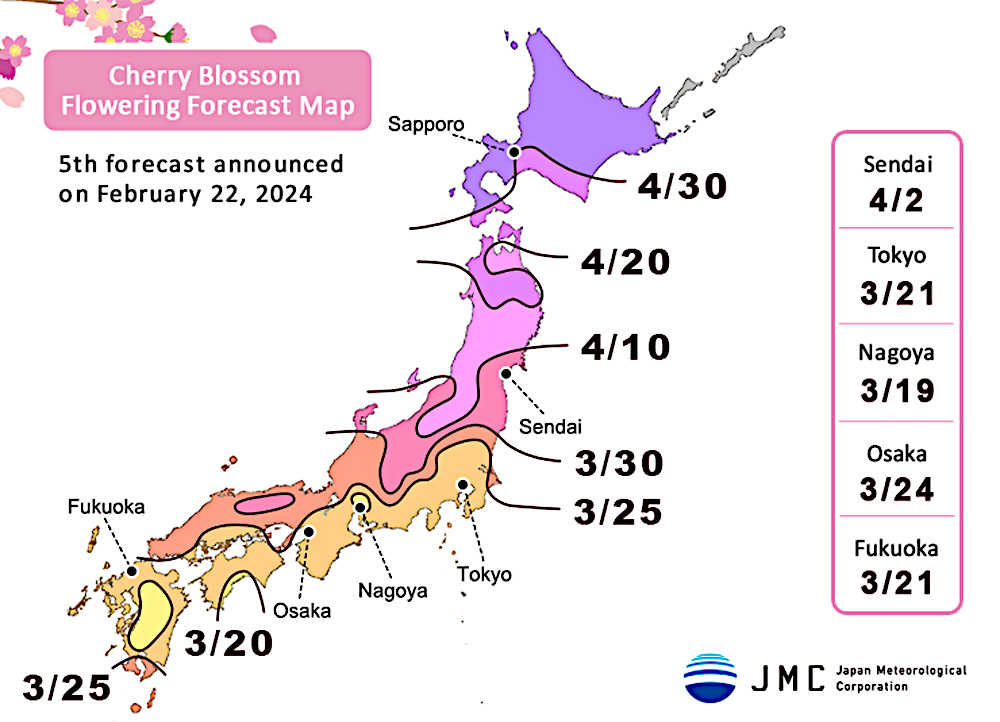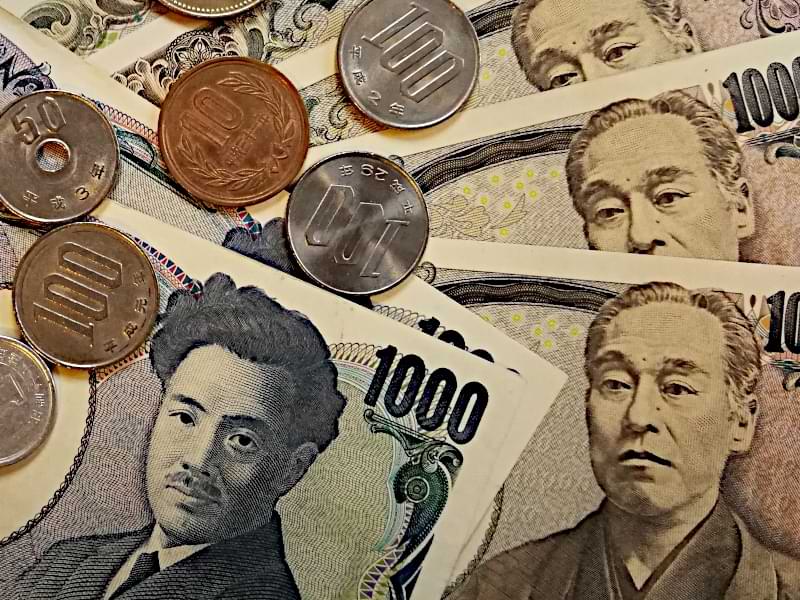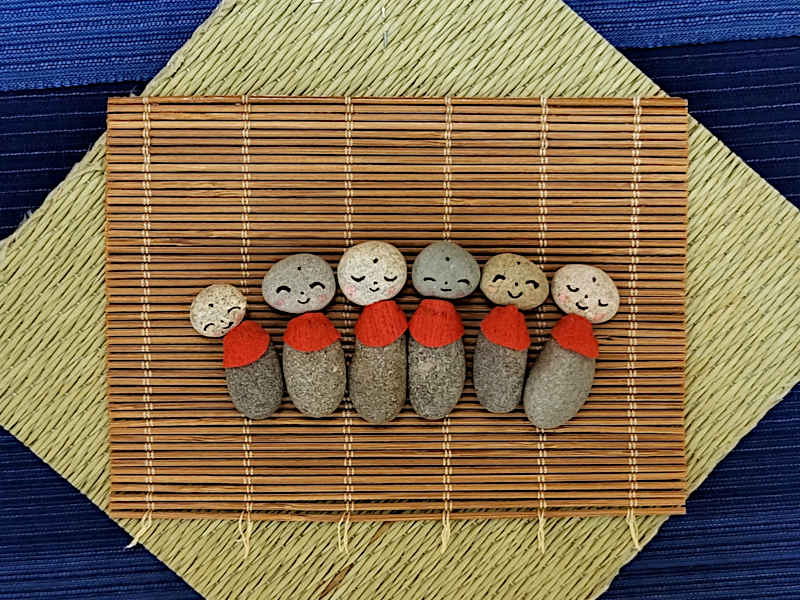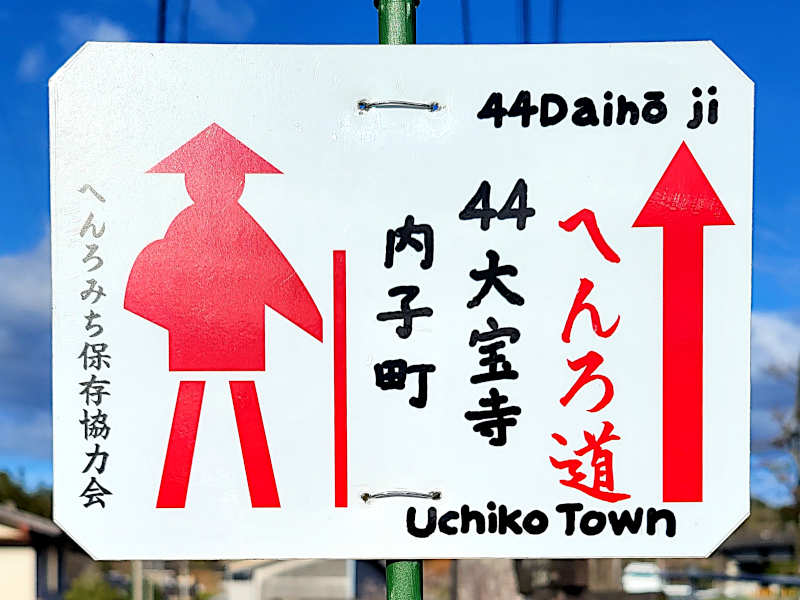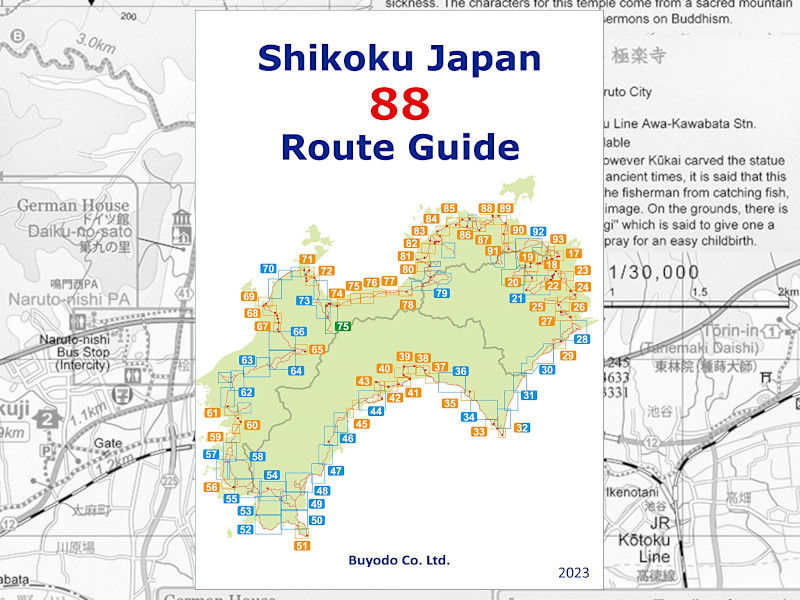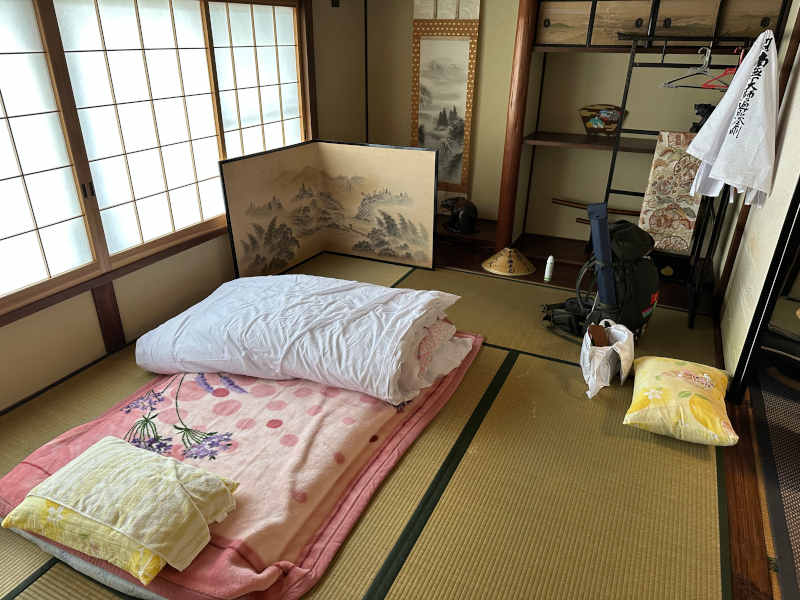The Shikoku Pilgrimage is at its best in spring and autumn. The best time to visit is from mid-March to the end of May and from early October to the end of November. Temperatures are pleasant and humidity is low.
Discover the ideal conditions for your pilgrimage – but remember that these are also the times when most pilgrims are travelling.
Shikoku Cherry Blossom Forecast 2024
| City | Cherry blossom - first bloom | Cherry blossom - full bloom |
|---|---|---|
| Tokushima | March 25 | April 02 |
| Kōchi | March 19 | March 27 |
| Matsuyama | March 23 | April 03 |
| Takamatsu | March 25 | April 02 |
The calendar months - discover and plan the best time for the Shikoku Pilgrimage
January and February: Winter. During these months it can be very cold. Snowfall is possible on the higher sections of the pilgrimage route.
March: Cherry blossom season. Begins on Shikoku in the second half of March. Full bloom is reached at the end of March/beginning of April. With annual variations depending on climate.
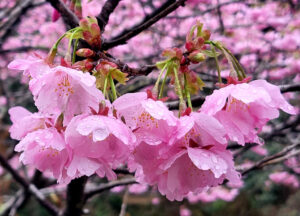
Mid-March to end of May: Best time in spring for the Shikoku pilgrimage.
May: Golden Week. Late April / early May: High season for travelling in Japan.
June and July: rainy season. Begins on Shikoku in early June and ends in the second half of July. Accordingly, June and July have the most rainy days of the year.
The start of the rainy season on Shikoku in 2023 was 29 May (according to the Japan Meteorological Agency).
Rainy season on Shikoku (Japan Meteorological Agency)
July and August: Midsummer. Temperatures in the 30s during the day, very hot and humid. Temperatures stay high at night. It is very hot during these months for this demanding pilgrimage.
August and September: Typhoon season. Between June and October, up to 30 tropical cyclones (typhoons) form over the Pacific each year. Most occur in August and September. On average, three of these typhoons reach Japan. These storms sweep across the country with high wind speeds. Torrential rains can cause landslides and floods.
Typhoon season in Japan (Japan Meteorological Agency)
Early October to late November: Best time in autumn for the Shikoku pilgrimage.
November and December: Leaves change colour. Many of Shikoku’s temples are famous for the magnificent colouring of the leaves of the maple and ginkgo trees (momiji and ichō). The best time to watch the leaves change colour in Kōchi is between 15 November and 8 December.
Autumn Foliage Forecast (forecast 2023)
December: Winter. December can be cold. The first snowfall is possible on the higher sections of the pilgrimage route.
Golden Week
During Golden Week (ゴールデンウィーク), four fixed holidays are combined with weekends and bridging days to form a longer period. During this time, most Japanese take time off to travel or visit family. It is advisable to take this into account when planning your pilgrimage and to book accommodation well in advance.
The Golden Week holidays
April 29 – Birthday of the late Emperor Hirohito, also known as Shōwa-tennō, who reigned from 1926 to 1989 (Shōwa no hi)
May 3 – Constitution Day (Kempō Kinen-bi)
May 4 – Green Day (Midori no hi)
May 5 – Children’s Day (Kodomo no hi)
n Japan, a holiday that falls on a Sunday is made up on the next working day.
Golden Week 2024: Monday, 29 April to Monday, 06 May
Golden Week 2025: Monday, 28 April to Monday, 05 May
Rainy days, sunshine hours, snowy days on Shikoku
rainy days – sunshine hours – snowy days
Temperatures over the year (° Fahrenheit) on Shikoku
Temperatures over the year (° Celsius) on Shikoku
Buntan (ブンタン)
October to April: Slightly sour, vitamin-rich citrus fruit grown in Kōchi Prefecture.
The fruit, about the size of a grapefruit, tastes great and is an excellent source of vitamins for pilgrims.
Open-grown buntan is sold from December to April. Early fruit is still bitter. Buntan tastes best in March.
Buntans grown in greenhouses are sold from October to January and are more expensive than those grown outdoors.
Buntan is my favourite, but many other citrus fruits are grown on Shikoku: konatsu (小夏), hassaku, zabon, natsu-mikan…
It’s worth trying.
March-buntan make a great gift for Japanese friends outside Shikoku. Most shopkeepers will arrange for a package of buntan to be sent within Japan at cost price.

